
CHAPTER 2

Drink up! Almost every farm had an orchard, and apple cider was a staple beverage. Coffee also was popular, but it was sometimes too expensive for the thrifty Pennsylvania Dutch. Coffee substitutes such as roasted rye and barley sometimes were used. Or dandelion roots were dug, cleaned, roasted, and ground to make a beverage. Pennsylvania Germans also made meadow tea from spearmint and peppermint. Blue mountain tea, made from sweet or anise-scented goldenrod, was another favorite. Many teas also had medicinal uses.
“Polly and I dug the west side of our garden, & in the afternoon I sowed salad, sweet Margerum, Carrots & parsley, and stuck radish and red beet seed, & my little onions.”
MATTHIAS ZAHMS DIARY, LANCASTER, PENNSYLVANIA, APRIL 9, 1821
Spring onions are one of the great treats found throughout Pennsylvania Dutch country. The pungent odor of freshly picked onions, with the damp earth still clinging to the bottoms, is pure perfume to the nostrils of a Pennsylvania Dutchman or his Hausfraa (housewife).
Beginning in late April and early May, spring onions are among the first offerings at farm markets and country roadside stands. Farm women put them on the table regardless of other foods being served. Dipped into salt and eaten with thickly buttered bread, these onions transport Dutchmen of all ages into a state of near intoxication. Growing onions is serious business, and woe to any “foreigner” who doesn’t understand how it is done!
The process begins with digging the garden. March 17, St. Gertrude’s Day (also known as St. Patrick’s Day), traditionally is when onions are planted. Three months later, on June 27—the Seven Sleepers—the women and children put the onions to sleep by knocking down their tops. This prevents formation of seed heads. Snug in their warm garden bed, the onions rest throughout most of the summer. On St. James Day, July 25, women and children pull the onions and allow them to dry and cure for several days before putting them into storage for winter use. If they aren’t removed by St. James Day, they are likely to rot.

Pennsylvania German cooks use onions in soups, filling or stuffing, and relishes, as well as Zwiwwelboi (onion pie), which is served hot as a main dish.
But it is the spring onions eaten raw that hold a special place in a Dutchman’s heart and stomach. After a long winter’s diet of dried and pickled foods, the onions are forecasters of the “wonderful good” garden bounty soon to find its way to the table.
Cream Salad Dressing for Lettuce
1 small head of lettuce
½ cup sugar
1 cup light cream
2 hard-boiled eggs
½ cup apple cider vinegar
Wash lettuce, break up into small pieces, and place in a serving dish. Slice the eggs on top of the lettuce. Mix the sugar and vinegar well, and slowly add the cream to the sugar-vinegar mixture. Pour over the lettuce and serve. Put a little crumbled bacon on top if desired.
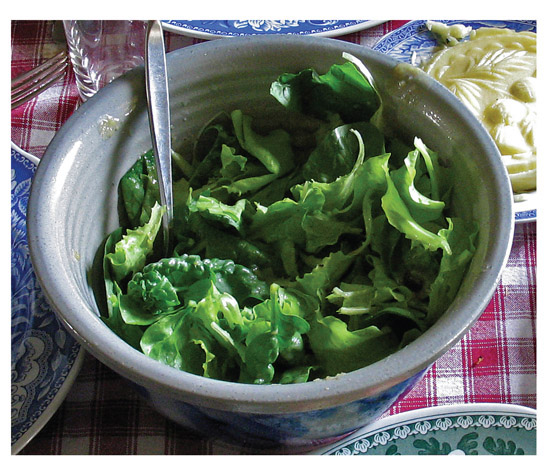

“An old German farmer remarked to me to-day that he was very sorry to see that we should have no cherries nor peaches this year—although there is such a profusion of blossoms—because they bloom in the dark of the moon!!!”
JAMES L. MORRIS DIARY, APRIL 25, 1846
Zwiwwelbrot (Onion Bread)
3 or 4 medium onions
2 cups pastry flour
1 teaspoon salt
1 cup buttermilk
3 tablespoons butter
¼ cup lard
1 teaspoon baking soda
assorted fresh or dried herbs for topping, such as parsley, savory, and dill
Peel and finely chop the onions. Fry in the butter until soft but not browned. Set aside; don’t drain the onions. Mix the salt and flour; then cut in the lard to make it crumbly. Mix in the baking soda and buttermilk, just until the buttermilk is incorporated. Spread the dough out into two lightly greased 8-inch cake pans. Divide the onions between the two loaves and sprinkle the herbs on top. Bake at 375 degrees until lightly browned, about 20 minutes. (Don’t substitute regular flour for pastry flour, which is available at gourmet food stores.)

Minnie-Ha-Ha Cake
1 cup sugar
1 egg
1½ cups flour
2 teaspoons baking powder
3 tablespoons butter
½ cup sweet milk
1 teaspoon vanilla
Cream butter and sugar. Add egg and beat well. Beat in the vanilla. Sift the flour and baking powder. Add alternately with the milk. Place in one 9-inch greased and floured cake pan. Bake at 350 degrees for about 25 to 30 minutes.
The Standard Cook Book, 1913 ladies and men’s Bible classes of Eden Sunday School, Eden, Pennsylvania, contributed by Martha Stoner
Onion Pie (Zwiwwelboi)
6 large onions
approximately 2 cups milk
2 tablespoons flour
2 hard-boiled eggs
3 tablespoons butter
salt and pepper to taste
Peel onions and slice into fairly large slices. Parboil until nearly soft and tender. Drain the onions; sprinkle with the flour, salt, and pepper. Place in a 9-inch pastry-lined pie dish. Slice hardboiled eggs on top, dot with butter, and fill up with milk. Put on a top crust and bake at 400 degrees for about 40 minutes.
Winnie Brendle, contributed by Mrs. Henry Brooks.
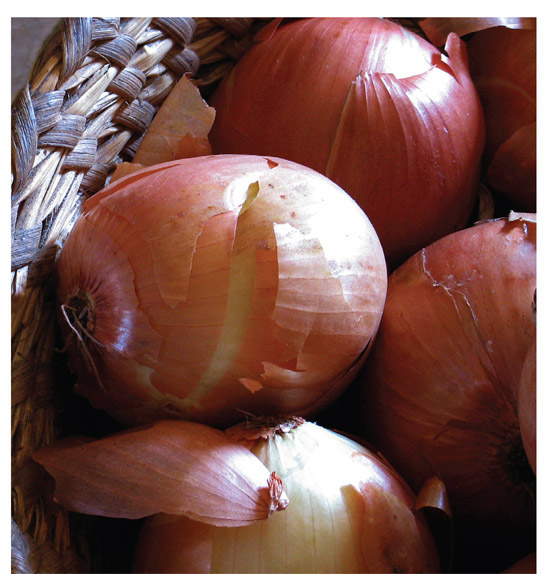
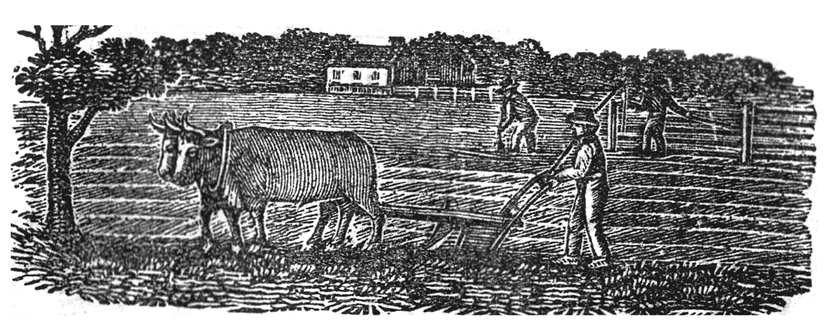
 Cultivation of Mustard
Cultivation of Mustard
“There is a white seeded sort and a brown seeded. The white mustard is used in salads along with the cress or pepper grass, and is sown and cultivated the same way. The black is that which table mustard is made of. It is sown in rows, two feet apart, early in the spring. The plants ought to be thinned to four or five inches apart. Good tillage between the rows. The seeds will be ripe in July, and the stalks should be cut off, and when quite dry, the seeds threshed out, and put by for use. Why should any man that has a garden, buy mustard? Why should he want the English to send him out, in a bottle, and sell for a quarter of a dollar, less and worse mustard than he can raise in his garden for a penny? The English mustard is, in general, a thing fabricated, and is false as the glazed and pasted goods, sent out by the fraudulent fabricators of Manchester. It is a composition of baked bones reduced to powder, some wheat flour, some coloring, and a drug of some kind that gives the pungent taste. Whoever uses that mustard freely, will find a burning heat in his side after he has swallowed the mustard. Why should any man who has a garden, buy this poisonous stuff? The mustard seed ground in a small mustard mill, is what he ought to use. He will have bran and all; but, we do not object to rye bread on account of its color! Ten pounds of seed will grow on a perch of ground and ten pounds of mustard is more than any man can want in a year. The plants do not occupy the ground more than fourteen weeks, and may be followed by another crop of any plant, and even mustard if you like. This, therefore, is a very useful plant, and ought to be cultivated by every farmer, and every man who has a garden.”
Baer’s Almanac, 1829, Lancaster, Pennsylvania

The last snow in spring usually comes after the onions are planted and is called the onion snow.
To Roast a Chicken on an Open Hearth
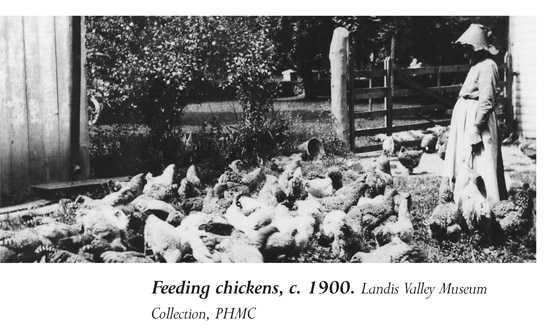
Take a small chicken of about four pounds and wash it well. If desired, stuff the cavity with celery, onions, and carrots. Herbs may also be added to the cavity or placed under the skin. Sew the cavity shut. Never fill the bird with bread stuffing. It is not safe!
Tie the wings to the body with heavy cotton mason’s cord or linen kitchen twine. Use another piece of cord to tie the legs together. Tie one or two cords around the entire bird from top to bottom. Make this cord as tight as possible. As the bird roasts, it shrinks, and the ties may fall off if not tight enough. Now take a long piece of cord, at least 2 yards long, maybe longer, depending on the distance from your crane to the hearth. Thread this cord through the cord around the bird, pull the two ends even, and tie it around the top of the crane. Don’t tie it too tightly until you have your bird positioned properly above the hearth—to one side of the main fire and about 6 to 8 inches above the hearth floor. Tie the cord so that you can easily remove it from the crane, as you will have to retie the bird later. Your cord will now be a double cord and just one large loop. Give the bird a twist, and it will rotate back and forth by the twisting and untwisting of the cord.
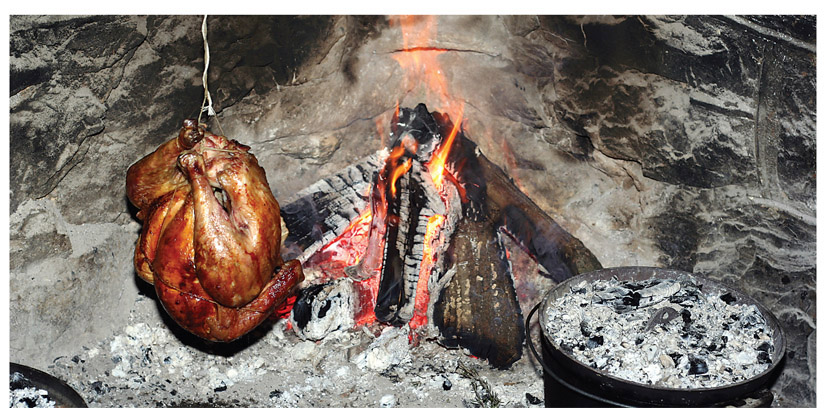
Start roasting the bird bottom side down first, and roast it for about 1½ hours. Then take the bird off the fire, and retie it so that the top is down and the bottom is up. Place back on the crane and roast another 1 to 1½ hours. Use a brisk fire for roasting. The bird should get nicely browned and not burned. The meat is very nice and juicy, not fatty. Any bird can be roasted on an open hearth, but the larger the bird, the more time it will take. Roast a 12- to 14-pound turkey for about 8 hours.